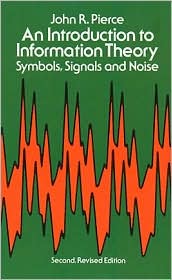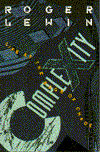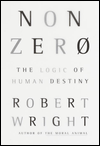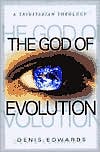Holism, Emergent Phenomena, and CSI (I.D. XVI)
Now I want to talk through my understanding of the next set of points he makes, including some which I am not sure stand up to scrutiny. In the final three sections of chapter 6 (pp. 170-183), he proposes the law of conservation of information (LCI), uses it to show that Darwinian evolution theory cannot alone account for CSI in earthly life forms, and then briefly reconceptualizes all of evolutionary biology in terms of information theory.
Along the way, he takes two or three swipes at Stuart Kauffman-style theories of self-organization as well. It is these swipes in particular that I don't think stand up to scrutiny. More about that later. Now, more about the LCI.
The law of conservation of information basically says that "closed systems of natural causes" can't grow in terms of their complex specified information content. They can lose information, in what amounts to entropy, but they can never gain information.
As a matter of fact, the LCI patterns with the second law of thermodynamics, I'd say, which says that closed thermodynamic systems cannot gain in energy.
One of the LCI corollaries that Dembski lays out is: "CSI cannot be generated spontaneously, originate endogenously, or organize itself" (p. 170). That would seem to let Kauffmanian self-organization out as a producer of new CSI. And, indeed, if one accepts Dembski's earlier proof that chance, natural law, or any combination thereof cannot create new CSI, then this corollary would seem a slam dunk.
But, wait. Unlike the other three corollaries which Dembski lists in the same paragraph on page 170, this one does not expressly limit its applicability to "closed systems of natural causes." Maybe that's an editorial oversight, or maybe it implies the possibility that self-organization can create CSI in open systems of natural causes.
By a "closed system" is apparently meant one which admits of no "exogenous" CSI — which perhaps makes the LCI, or at least its corollaries, somewhat tautological. It's like saying that if no new CSI comes in, then no new CSI comes in.
At any rate, if a biological system is open, it presumably can go up in CSI. What's to keep self-organization, where applicable, from explaining that increase?
Dembski does allow for CSI to increase in open systems that co-opt existing CSI from outside, as when a bacterium receives a plasmid molecule from another bacterium. This exogenous information is biotic, but traced all the way historically back, it is very likely abiotic. But then the inevitable "regress" question rears its ugly head: where did the abiotic, exogenous information come from in the first place?
Let's say for the sake of discussion that some of it comes from God. Does that stipulation preclude that some of it comes from self-organization?
To investigate that question thoroughly, I need to explore the fact that, as Dembski says, "CSI is holistic ... individual items of information (be they simple, complex, specified or even complex specified) cannot simply be added together and thereby form a new item of complex specified information" (p. 173, italics mine).
Here's a rundown on what it means to be holistic. The set composed of the individual words in the line from Hamlet "METHINKS IT IS LIKE A WEASEL" does not contain all the information in the sentence as a whole. For instance, it does not contain the clarifying, uncertainty-reducing information which arises from the specific syntactic arrangement of the words.
Take the set (JOHN, MARY, LOVES). It can make either "JOHN LOVES MARY" or "MARY LOVES JOHN." You need extra information in addition to the set of words itself to tell which arrangement — which meaning — is intended. That's holism: the whole sentence is (informationally speaking) greater than the "sum" of its words.
The grammar and lexicon of the English language make each of these sample sentences well-formed, and thus they can be specified perfectly, independently of their actual production. They are not gobbledygook; each has an independent specification. Presumably, they are also complex enough to represent CSI.
But "METHINKS IT IS LIKE A WEASEL MARY LOVES JOHN," which we get by merely "adding" the original two specifications together, results in an ill-formed string. It could be rescued by adding "AND" in the middle, but as it stands, the concatenated whole is less than the sum of its parts.
That suggests that to derive a single piece of CSI from two smaller pieces of CSI generally requires an addition of extra information. For that is what holistic means.
Now, Kauffman-style self-organization also deals with holistic systems; indeed, Kauffman calls himself an "unrepentant holist." In self-organized systems, emergent phenomena arise. For example, when a certain number of proteins get together, they can form a collectively autocatalytic set whose emergent property is the ability of the entire set to self-propagate.
Why is this emergent phenomenon of a self-organized system not isomorphic with the "extra" CSI in a well-formed sentence, above and beyond the CSI in the individual words by themselves?
Notice, by the way, that Kauffman expressly shows that self-organizing dynamical systems have to be other than thermodynamically closed. They must be "dissipative" systems, meaning that they must take in energy from outside themselves, use some of it, and expel the rest. "Open" would be another word for "dissipative."
By extension, how do we know that there do not exist "dissipative" systems of "pure" CSI whose information (rather than energy) economy depends on their openness?
If there are, then just as the second law of thermodynamics doesn't handcuff self-organizing systems' energy usage, perhaps Dembski's LCI is more or less irrelevant to open, self-organizing information systems.
Or, maybe these two hypothetical classes of system are actually one and the same, such that information-openness and energy-openness always co-occur.
I'm just tossing these speculations out on the table for contemplation and further discussion. For it is not apparent to me that Dembski succeeds in rigorously ruling them out, by any means!
***
After I wrote the above, I came up with what I think is a good way to demonstrate that systems with emergent properties, as is the case for some or all self-organized systems, do not in fact contain "extra" CSI.Dembski shows (p. 157) that the following equation holds:
(1) I(A&B) = I(A) + I(B|A)
I(A&B) is the information content, in bits, of the event (A&B), which occurs if and only if both event A occurs and event B occurs.
I(A) is the information content in event A by itself.
And I(B|A) is the information content in the event (B|A), which means "B given A." When added to I(A), their sum equals I(A&B).
To understand I(B|A), think instead of the probability of "B given A," or P(B|A). For example, what is the probability that two thrown dice, A and B, read (A=6,B=6)? Normally, it is 1/36, but if we already know that die A has come up 6, then the probability of (A=6,B=6) is reduced to 1/6. This means that P((A=6,B=6)|A=6) = 1/6. The probability that A comes up 6 and B comes up 6, given that A does come up 6, is 1 in 6.
To get from P to I, we use the formula
(2) I(E) = -log2p
where p is the probability of event E occurring. The base-2 logarithm of p is calculated, then negated to obtain a positive number.
When E is the complex event ((A=6,B=6)|A=6), p = P(E) = 1/6, and I(E) = -log2(1/6) ≃ 2.58. That is, there are between 2 and 3 bits of information in the event which dice players call "boxcars," when one of the dice is already known to have come up 6.
So events' probabilities and their information content — their ability to reduce uncertainty — are interchangeable concepts, based on formula (2) and its equivalents. Thus, I(A&B) depends on the probability that (A&B) occurs, which is P(A&B). I(A) depends on P(A). And I(B|A) depends on P(B|A).
If we know the two proabilites P(A) and P(B|A), we can use equation (2) twice to compute the two information contents I(A) and I(B|A). From there we can solve equation (1) for I(A&B). That's one good way to find out how many bits of information are in the composite event "A and B," where the likelihood of B depends to some extent on the likelihood of A.
Now, suppose we assign A as the name of the event wherein a set of proteins of size N somehow forms (i.e., the number of proteins in the set, whatever it happens to be, is being called N). B is the event wherein a protein set of the same size, N, successfully achieves catalytic closure, such that the production every protein in the set is catalyzed by at least one other protein in the set.
Given those suppositions, (B|A) is the event "B given A," whose probability P(B|A) is computed after one simply assumes that A occurs. This is the way we symbolize the idea, "How likely is a protein set of size N, assuming it forms, to be autocatalytic?"
Clearly, when N is small (say, N=2), the likelihood P(A) of a two-protein set forming by sheer chance in nature is fairly high. But, although Stuart Kauffman shows that a two-protein set can just happen to be autocatalytic, the likelihood of it, P(B|A), is small. Now, if we know those two probabilities, P(A) and P(B|A), we can solve
(3) P(A&B) = P(A) x P(B|A)
to find P(A&B). Then we can use equation (2) to turn P(A&B) into I(A&B). This probabilistic approach is yet another way to determine the information content in a pair of events when one event depends on the other.
When N=2, P(A) is high and P(B|A) is low. If P(A) happens to be 0.9 and P(B|A) happens to be 0.1, their product P(A&B) is 0.09, and I(A&B) is approximately 3.47 bits.
There is ostensibly some N — maybe it's N=100 — which reverses those two probabilities, such that P(A) happens to be 0.1 and P(B|A) happens to be 0.9. Even so, their product, P(A&B), is still the same, 0.09, and I(A&B) is still approximately 3.47 bits.
In between N=2 and N=100, there is some N — say, it's N=30 — such that if A (the event wherein a set of 50 protiens forms) happens, the probability of catalytic closure for that set, P(B|A), is 0.50. This particular set size N (whatever N happens to be) is special.
To see why, let's imagine two protein sets of this special size, N=30. Call the first set Al, the second Charlie. Now, let's say that Al happens to be a protein set in which catalytic closure is achieved, meaning that Al has the emergent property of being able to self-reproduce. But poor Charlie happens to lack catalytic closure and is not self-reproducing.
Still, equation (3) gives exactly the same result for Al as for Charlie. This is because the probability of a size N=30 set not being autocatalytic, à la Charlie, is 1.0 minus the probability of that set being autocatalytic, à la Al. But 1.0 - 0.5 = 0.5 (again). So, when N=30, Charlie has the same probability of existing as Al.
This implies that, by equation (2), Charlie has the same information content as Al!
So here we have these two protein sets, Al and Charlie, one of which has the emergent property of being self-reproducing (because it has catalytic closure) and the other of which presumably does not have any emergent properties at all. Yet they both have the same information content, since we chose N in such as way as (conveniently) to make the likelihood of Al, the "emergently blessed" protein set, equal to that of Charlie, the "ordinary" protein set.
In this way we are able to confirm that (at least when N is aptly chosen), the possession of emergent properties by systems does not affect the information content of those systems.
I take it that this result generalizes to situations in which N is some other number, such that as a general rule the possession of an emergent property can make no difference to information content — and, in particular, to CSI content.
This is an important result. It means that Dembski is right, and emergent phenomena/properties are not associated with "extra" CSI — however much this fact confounds my or anyone else's intuitions to the contrary.
Emergence does not create CSI.
Neither, apparently, does the self-organization which often (says Kauffman) underlies the emergence. Even if such self-organization requires thermodynamically open, dissipative systems, there is no reason to believe that information openness is analogous to energy openness. That is, there is no reason to assume that a system that is open to the receipt of new CSI — however that task may in fact be accomplished — dissipates "waste" CSI in the way that Kauffman's self-organizing systems dissipate "waste" energy.
I cannot agree with Dembski that Kauffman is off base altogether, though I do now agree that Kauffman's self-organizing systems do not create CSI. Dembski writes:
... unlike the nebulous informational pathways sketched by Stuart Kauffman, Christopher Langton and others at the Santa Fe Insitute, informational pathways need to conform to biological reality, not to the virtual reality in a computer. (p. 182)There are several things wrong with that snide remark. One, it's a cheap shot, since it is supported by no discussion or argumentation whatsoever about the supposedly "nebulous" pathways Kauffman, Langton, and others describe.
Two, I find nothing "nebulous" about Kauffman's discoveries in At Home in the Universe, nor about the insights of Christopher Langton which I've read about in other books. Conceptually challenging, yes; nebulous, no.
Three, if computer models tell of a "virtual reality," which they do, it is not unreasonable to think that they are capable of patterning with "biological reality" and informing us about the latter. True, there have to be "reality checks" to keep the whole enterprise honest, but Kauffman proposes them constantly throughout his book. Dembski is as wrong not to take Kauffman seriously as anti-I.D.'ers are not to take him seriously.
For, as I said in The Handmaiden of Design (I.D. XIV), the lawfulness of self-organization can help the contingency of irreducible complexity come to be. Nor does this apparent fact of life threaten Dembski's central point in any way: the CSI whose flow self-organization channels still comes entirely from God.


















0 Comments:
Post a Comment
<< Home